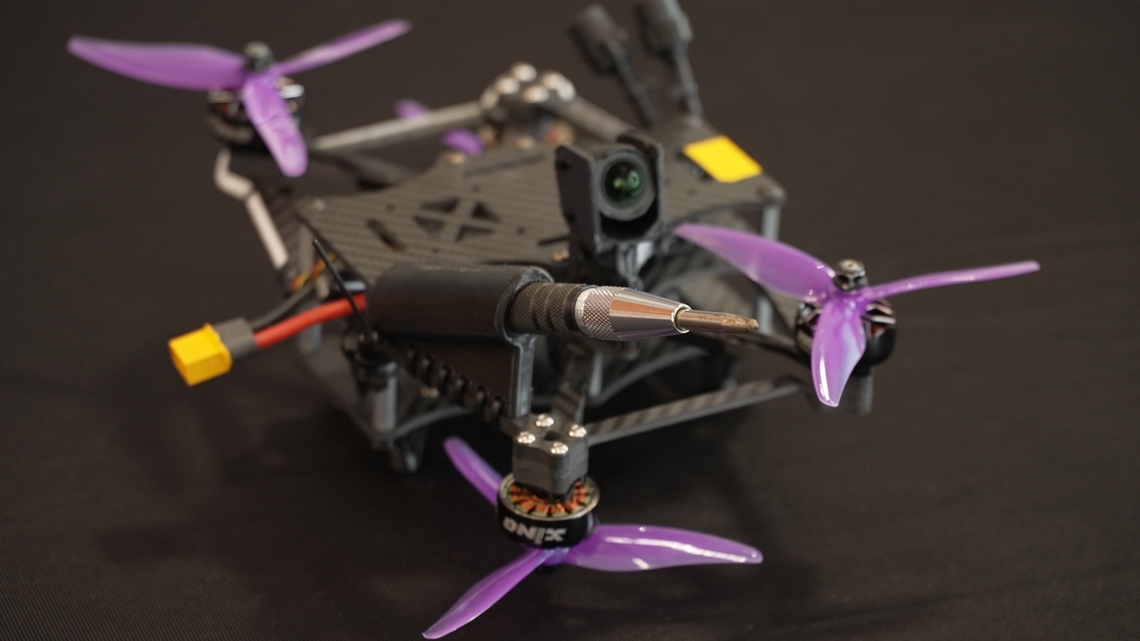
Austin-based startup Campus Guardian Angel demonstrated how its drones can be used to prevent school shootings and help local law enforcement.
LANCASTER, Texas — It sounds like something out of “RoboCop.”
Drones small enough to fit in a child’s backpack could be used to save students’ lives and give first responders a leg up on active shooters. That’s the goal of the Austin-based startup, Campus Guardian Angel.
On Monday, the company put on a demonstration, hosted by Lancaster ISD. With school shootings remaining a lingering problem across the U.S., including here in North Texas, Campus Guardian Angel’s goal is to help first responders get a head start on neutralizing active threats.
Trained drone pilots, some champions in professional drone racing, will control the drones remotely from the company’s Austin command center. According to our content partners at KVUE, the drones would be located at the schools year-round, housed in a box, and would be activated like a “sprinkler system” if a threat arises.
The company’s drones are equipped with cameras, metal tips that can shatter windows, and a paintball gun that can fire pepper rounds. The drones are also capable of travelling at speeds of 100mph and can be used to crash directly into threats with great force. During Monday’s demonstration, a pilot careened a drone into a punching dummy at 60mph, knocking it to the ground.
“What we’re trying to provide is that layer that can get there within seconds to be able to get the assailant doing anything except shooting children,” said Campus Guardian Angel Chief Tactical Officer Bill King.
According to the company, most victims of school shootings are shot within the first two minutes. The company claims its drones can confront the shooter within 15 seconds.
The startup also said it aims to protect school resource officers and other first responders. The company employs former dispatchers, who can help give responding officers crucial information, such as the shooter’s location, through a two-way speaker.
The company said its drones can get to a shooter’s location first to distract or incapacitate the assailant with the aforementioned tools so that an officer can safely apprehend the suspect.
“If we get shot, we don’t care, we’re just a lump of plastic,” said CEO Justin Marston.
Still, Marston said, with how agile and small the drones are, even trained officers find them hard to hit.
Drones have become a fixture in the future of law enforcement in North Texas. Several local police departments have launched drone programs, which will act as first responders, gathering information for emergency services before they arrive.
Following Gov. Abbott’s signature on an $8.5 billion public school funding package, districts across the state now have additional funds to invest in safety. Notably, $430 million was allocated in HB 2 specifically for school safety.
State Senator Royce West (D-Dallas) was also in attendance and said that with the recent increase in funding, school districts should look into the use of drones.
“The reality is that I have never seen anything like this before,” Sen. West said. “I think it’s cutting technology that needs to be considered by every school district in the state of Texas.”
Lancaster ISD Superintendent Dr. A. K. Perera said the school district was simply hosting the demonstration and has not committed to implementing the technology in LISD.
